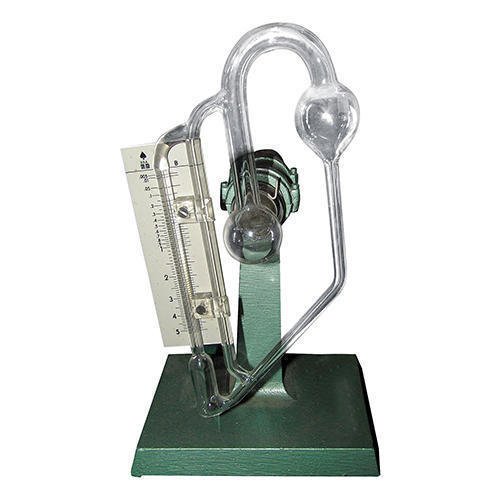
Mcleod Gauge is an instrument used to measure very low pressures nearly 10-6 Torr. This device is named after its inventor Herbert Mcleod. It was invented by Herbert Mcleod in the year 1874.
The shape of the Mcleod Gauge is similar to the mercury manometer which is the most common instrument used for the measurement of pressure.
This Mcleod Gauge also has mercury inside it and the pressure measurement is done by seeing the changes in the mercury level.
Parts Of Mcleod Gauge:
1 Mercury Reservoir:
Mercury reservoir is used to store mercury which can be used for measurement of pressure in the Mcleod Gauge.
2 Piton:
A piston is used to raise or lower the level of mercury in the measuring capillary, bulb, reference column and reference capillary.
3 Reference column with reference capillary:
The pressure which is to be measured is applied to this reference column from top.
This reference column is attached with reference capillary which has a scale and the zero reading of this reference capillary is called zero reference point.
4 Bulb and measuring capillary:
This bulb and measuring capillary is connected with the reference column. Mcleod gauge is designed in such a way that there will be some space left in the measuring capillary when the mercury will reach the zero reference point.
The point where the measuring capillary and reference column meets is called the cut off point. It is called cut off point because when the mercury level is raised above this point, the entry of the applied pressure from the reference column to the measuring capillary and bulb will be cut off.
5 Scale:
There is a common scale for measuring capillary and reference capillary.
